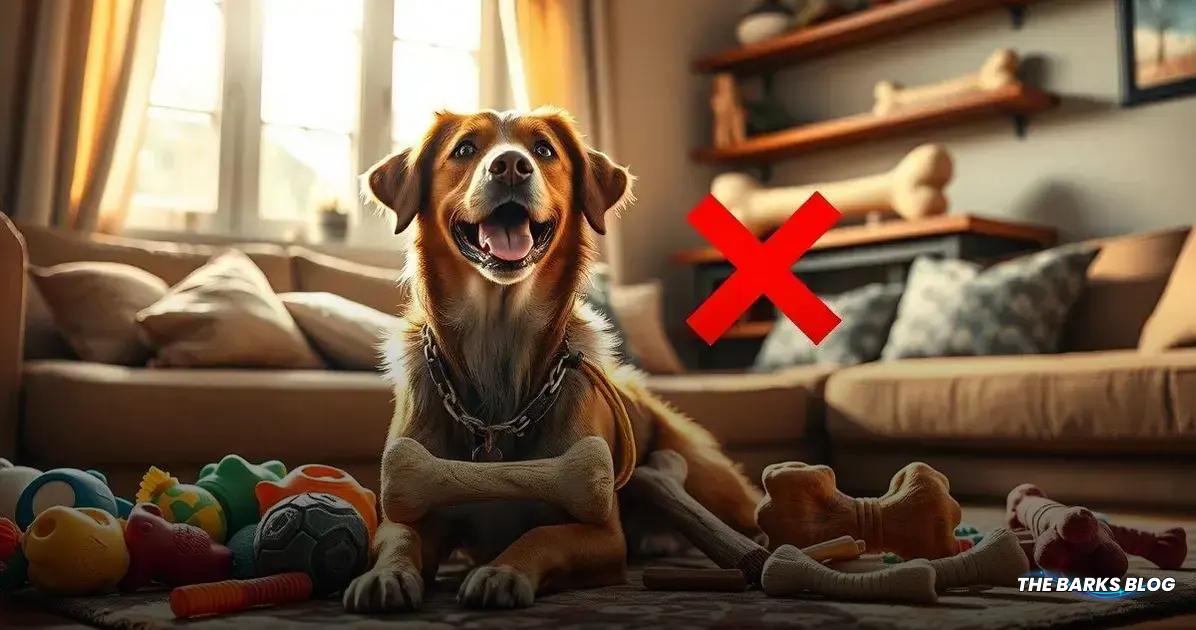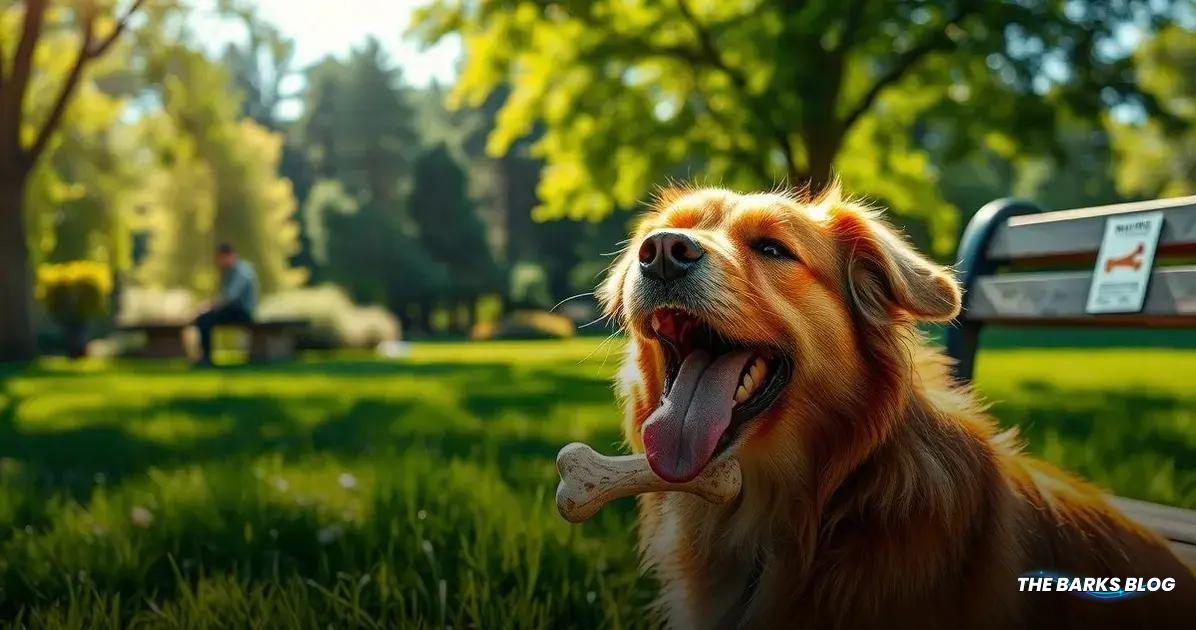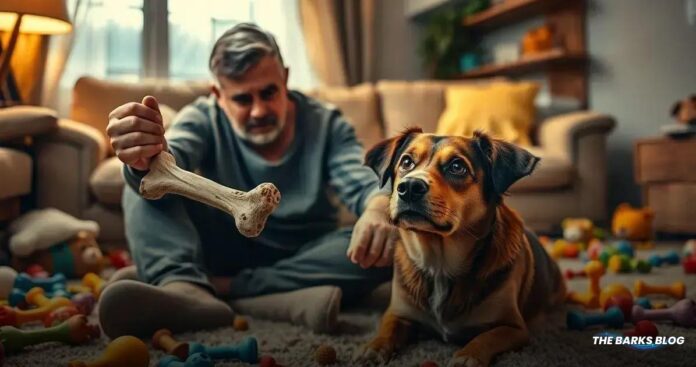Understanding the risks of dogs eating bones is crucial for pet owners, as bones can lead to serious health issues like dental fractures and gastrointestinal obstructions. Instead of bones, consider safer alternatives such as dog-specific chew toys and certain fruits and vegetables to maintain your dog’s dental health. Always prioritize safety by following bone safety tips and consulting your veterinarian before introducing new treats.
For years, many dog owners have considered bones a natural treat for their pets. But the question remains: can dogs eat bones? While dogs might enjoy chewing on them, there are significant risks that every pet parent should be aware of.

Risks of Bones for Dogs
Bones can pose numerous health risks for dogs, and it’s crucial for pet owners to understand these dangers.
Here are some of the primary risks associated with dogs consuming bones:
- Dental Fractures: Chewing on hard bones can lead to broken teeth, resulting in pain and requiring expensive veterinary treatments. Dogs with broken teeth may experience difficulty eating and may require dental surgery.
- GI Obstruction: Bones can become lodged in the esophagus, stomach, or intestines, causing blockages that may necessitate surgical intervention. This can be a life-threatening situation for your dog.
- Splintering: Bones can splinter and create sharp edges, which can puncture the digestive tract, leading to severe internal injuries and infections. These injuries can be life-threatening and require immediate veterinary care.
- Pathogens: Raw bones can harbor harmful bacteria such as Salmonella and E. coli, which can cause serious illness in both dogs and humans. This poses a health risk not only to your pet but also to your household.
Given these significant risks, many veterinarians recommend avoiding bones altogether and opting for safer alternatives that can provide similar chewing satisfaction without the dangers.

Safe Alternatives to Bones
While bones may seem like a natural treat for dogs, there are many safer alternatives that can satisfy your dog’s chewing instincts without the associated risks. Here are some recommended options:
- Dog-Specific Chew Toys: These toys are designed specifically for dogs and can withstand heavy chewing. Look for options made from durable materials that are safe for your pet.
- Veterinary Oral Health Council (VOHC) Approved Products: These dental chews are formulated to promote oral health while providing a satisfying chewing experience. They help reduce plaque and tartar buildup, contributing to your dog’s overall dental hygiene.
- Rawhide Alternatives: If you’re considering rawhide, opt for high-quality, digestible alternatives made from natural ingredients. These can provide a similar chewing experience without the risks associated with traditional rawhide.
- Fruits and Vegetables: Certain fruits and vegetables can serve as healthy chew options. For example, carrots, sweet potatoes, and apple slices (without seeds) can be great for dogs to gnaw on while providing vitamins and nutrients.
- Antlers and Chew Sticks: While antlers can pose some risks, they are often safer than bones if your dog is a gentle chewer. Always supervise your dog while they chew on these items to ensure they don’t splinter.
By providing these safer alternatives, you can keep your dog happy and engaged while minimizing the risk of injury or health issues associated with bones.

Dental Health and Bones
Maintaining dental health is crucial for your dog’s overall well-being, and while chewing can be beneficial, real animal bones are not the ideal choice for this purpose.
Here’s why:
- Risk of Dental Fractures: Chewing on hard bones can lead to broken teeth, which can cause significant pain and require costly veterinary treatments. Dogs with dental fractures may struggle to eat and could develop infections if the exposed tooth pulp is not treated.
- Oral Injuries: Bones can cause cuts or injuries in your dog’s mouth, leading to pain and potential infections. These injuries can complicate your dog’s ability to eat and drink comfortably.
- Better Alternatives: Instead of bones, consider using dog-specific chew toys and VOHC-approved dental products. These alternatives are designed to promote dental health without the risks associated with real bones. They can help reduce plaque and tartar buildup while being gentle on your dog’s teeth.
- Regular Dental Care: In addition to providing safe chew options, regular dental care is essential. Brushing your dog’s teeth, providing dental chews, and scheduling veterinary dental cleanings can help keep your dog’s teeth and gums healthy.
Ultimately, while chewing is beneficial for dental health, it’s important to choose safe and appropriate options that protect your dog’s teeth and overall health.

Bone Safety Tips for Dogs
If you decide to give your dog bones, it’s essential to follow certain safety tips to minimize the associated risks. Here are some important guidelines to keep in mind:
Size Appropriateness: Always ensure that the bone is appropriately sized for your dog. A bone that is too small can become a choking hazard, while one that is too large may cause dental injuries.
Supervision: Always supervise your dog while they are chewing on a bone. This allows you to monitor their chewing habits and intervene if they start to splinter the bone or show signs of distress.
Proper Storage: Store raw bones in the refrigerator to prevent bacterial growth. Avoid leaving bones out at room temperature for extended periods, as this can lead to contamination.
Disposal: Dispose of bones properly once they become small enough to pose a choking hazard or if they start to splinter. Regularly check the bones and remove them when they are no longer safe for chewing.
Consult Your Veterinarian: Before introducing bones into your dog’s diet, consult your veterinarian for personalized advice. They can help you determine if bones are suitable for your dog and recommend safe options.
By following these safety tips, you can help ensure that your dog enjoys their chewing experience while minimizing the risks associated with bones.
Final Thoughts on Bones for Dogs
While the idea of giving your dog a bone might seem appealing, the risks often outweigh the benefits. Bones can lead to various health issues, from dental fractures to life-threatening internal injuries.
Instead of bones, consider safer alternatives like dog-specific chew toys and VOHC-approved dental products to keep your dog happy and healthy.
Always prioritize your dog’s safety and well-being by consulting your veterinarian before introducing any new treats or toys into their routine. By making informed choices, you can ensure that your furry friend enjoys a safe and fulfilling chewing experience.
FAQ – Frequently Asked Questions about Dogs and Bones
Can dogs eat bones safely?
While dogs may enjoy chewing on bones, many veterinarians advise against it due to the risks of dental fractures, gastrointestinal obstructions, and splintering.
What are the risks of giving my dog bones?
The risks include dental fractures, GI obstructions, splintering that can cause internal injuries, and exposure to harmful bacteria from raw bones.
What should I give my dog instead of bones?
Consider dog-specific chew toys, VOHC-approved dental products, fruits, vegetables, or rawhide alternatives designed for safe chewing.
Are raw bones safer than cooked bones for dogs?
Raw bones are generally less likely to splinter than cooked bones, but they still carry risks such as dental fractures and bacterial contamination.
How can I maintain my dog’s dental health without bones?
Opt for dog-specific chew toys and dental products, regularly brush your dog’s teeth, and schedule veterinary dental cleanings to maintain their oral health.
What should I do if my dog chews on a bone and shows signs of distress?
If your dog shows signs of distress after chewing on a bone, such as vomiting, difficulty breathing, or excessive drooling, contact your veterinarian immediately.




